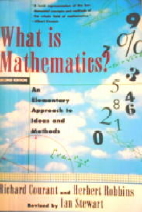In 2011 John Horgan posted a piece on his blog, Cross Check (part of the Scientific American blog network), with the title, Why Information can’t be the basis of reality. There Horgan makes the observation that the “everything-is-information meme violates common sense.” As of last December (at least) he hadn’t changed his mind. He referred back to the information piece in a subsequent post that was, essentially, a critique of Guilio Tononi’s Integrated Information Theory of Consciousness which had been the focus of a workshop that Horgan attended at New York University last November. In that December post Horgan quotes himself making the following argument:
The concept of information makes no sense in the absence of something to be informed—that is, a conscious observer capable of choice, or free will (sorry, I can’t help it, free will is an obsession). If all the humans in the world vanished tomorrow, all the information would vanish, too. Lacking minds to surprise and change, books and televisions and computers would be as dumb as stumps and stones. This fact may seem crushingly obvious, but it seems to be overlooked by many information enthusiasts. The idea that mind is as fundamental as matter—which Wheeler’s “participatory universe” notion implies–also flies in the face of everyday experience. Matter can clearly exist without mind, but where do we see mind existing without matter? Shoot a man through the heart, and his mind vanishes while his matter persists.
What is being overlooked here, however, are the subtleties in a growing, and consistently shifting perspective on information itself. More precisely, what is being overlooked is what information enthusiasts understand information to be and how it can be seen acting in the world around us. Information is no longer defined only through the lens of human-centered learning. But it is promising, as I see it, that information, as it is currently understood, includes human-centered learning and perception. The slow and steady movement toward a reappraisal of what we mean by information inevitably begins with Claude Shannon who in 1948 published The Mathematical Theory of Communication in Bell Labs’ Technical journal. Shannon saw that transmitted messages could be encoded with just two bursts of voltage – an on burst and an off burst, or 0 and 1 – which immediately improved the integrity of transmissions. But, of even greater significance, this binary code made the mathematical framework that could measure the information in a message possible. This measure is known as Shannon’s entropy, as it mirrors the definition of entropy in statistical mechanics which is a statistical measure of thermodynamic entropy. Aloka Jha does a nice job of describing the significance of Shannon’s work in a piece he wrote for The Guardian.
In a Physics Today article physicists Eric Lutz and Sergio Ciliberto begin a discussion of a quirk in the second law of thermodynamics (known as Maxwell’s demon) in this way:
Almost 25 years ago, Rolf Landauer argued in the pages of this magazine that information is physical (see PHYSICS TODAY, May 1991, page 23). It is stored in physical systems such as books and memory sticks, transmitted by physical means – for instance, via electrical or optical signals – and processed in physical devices. Therefore, he concluded, it must obey the laws of physics, in particular the laws of thermodynamics.
But Maxwell’s demon messes with the second law of thermodynamics. It’s the product of a thought experiment involving a hypothetical, intelligent creature imagined by physicist James Clark Maxwell in 1867. The creature introduces the possibility that the Second Law of Thermodynamics could be violated because of what he ‘knows.’ Lisa Zyga describes Maxwell’s thought experiment nicely in a phys.org piece that reports on related findings:
In the original thought experiment, a demon stands between two boxes of gas particles. At first, the average energy (or speed) of gas molecules in each box is the same. But the demon can open a tiny door in the wall between the boxes, measure the energy of each gas particle that floats toward the door, and only allow high-energy particles to pass through one way and low-energy particles to pass through the other way. Over time, one box gains a higher average energy than the other, which creates a pressure difference. The resulting pushing force can then be used to do work. It appears as if the demon has extracted work from the system, even though the system was initially in equilibrium at a single temperature, in violation of the second law of thermodynamics.
I’m guessing that Horgan would find this consideration foolish. But Maxwell didn’t.
And I would like to suggest that this is because a physical law is not something that is expected to hold true only from our perspective. Rather, it should be impossible to violate a physical law. But it has now become possible to test Maxwell’s concern in the lab. And recent experiments shed light, not only on the law, but also how one can understand the nature of information. While all of the articles or papers referenced in this post are concerned with Maxwell’s demon, what they inevitably address is a more precise and deeper understanding of the nature and physicality of what we call information.
On 30 December 2015, Physical Review Letters published a paper that presents an experimental realization of “an autonomous Maxwell’s demon.” Theoretical physicist Sebastian Deffner. who wrote a companion piece for that paper, does a nice history of the problem.
Maxwell’s demon was an instant source of fascination and led to many important results, including the development of a thermodynamic theory of information. But a particularly important insight came in the 1960s from the IBM researcher Rolf Landauer. He realized that the extra work that can be extracted from the demon’s action has a cost that has to be “paid” outside the gas-plus-demon system. Specifically, if the demon’s memory is finite, it will eventually overflow because of the accumulated information that has to be collected about each particle’s speed. At this point, the demon’s memory has to be erased for the demon to continue operating—an action that requires work. This work is exactly equal to the work that can be extracted by the demon’s sorting of hot and cold particles. Properly accounting for this work recovers the validity of the second law. In essence, Landauer’s principle means that “information is physical.” But it doesn’t remove all metaphysical entities nor does it provide a recipe for building a demon. For instance, it is fair to ask: Who or what erases the demon’s memory? Do we need to consider an über-demon acting on the demon?
About eighty years ago, physicist Leo Szilard proposed that it was possible to replace the human-like intelligence that Maxwell had described with autonomous, possibly mechanical, systems that would act like the demon but fully obey the laws of physics. A team of physicists in Finland led by Jukka Pekola did that last year.
According to Deffner,
The researchers showed that the demon’s actions make the system’s temperature drop and the demon’s temperature rise, in agreement with the predictions of a simple theoretical model. The temperature change is determined by the so-called mutual information between the system and demon. This quantity characterizes the degree of correlation between the system and demon; or, in simple terms, how much the demon “knows” about the system.
We now have an experimental system that fully agrees with our simple intuition—namely that information can be used to extract more work than seemingly permitted by the original formulations of the second law. This doesn’t mean that the second law is breakable, but rather that physicists need to find a way to carefully formulate it to describe specific situations. In the case of Maxwell’s demon, for example, some of the entropy production has to be identified with the information gained by the demon. The Aalto University team’s experiment also opens a new avenue of research by explicitly showing that autonomous demons can exist and are not just theoretical exercises.
Earlier results (April 2015) were published by Takahiro Sagawa and colleagues. They created the realization of what they called an information heat engine – their version of the demon.
Due to the advancements in the theories of statistical physics and information science, it is now understood that the demon is indeed consistent with the second law if we take into account the role of information in thermodynamics. Moreover, it has been recognized that the demon plays the key role to construct a unified theory of information and thermodynamics. From the modern point of view, the demon is regarded as a feedback controller that can use the obtained information as a resource of the work or the free energy. Such an engine controlled by the demon can be called an information heat engine.
From Lisa Zyga again:
Now in a new paper, physicists have reported what they believe is the first photonic implementation of Maxwell’s demon, by showing that measurements made on two light beams can be used to create an energy imbalance between the beams, from which work can be extracted. One of the interesting things about this experiment is that the extracted work can then be used to charge a battery, providing direct evidence of the “demon’s” activity.
Physicist, Mihai D. Vidrighin and colleagues carried out the experiment at the University of Oxford. Published results are found in a recent issue of Physical Review Letters.
All of these efforts are illustrations of the details needed to demonstrate that information can act on a system, that information needs to be understood in physical terms, and this refreshed view of information inevitably addresses our view of ourselves.
These things and more were brought to bear on a lecture given by Max Tegmark in November 2013 (which took place before some of the results cited here) with the title Thermodynamics, Information and Concsiousness in a Quantum Multiverse. The talk was very encouraging. One of his first slides said:
I think that consciousness is the way information feels when being processed in certain complex ways.
“What’s the fuss about entropy?” he asks. And the answer is that entropy is one of the things crucial to a useful interpretation of quantum mechanical facts. This lecture is fairly broad in scope. From Shannon’s entropy to decoherence, Tegmark explores meaning mathematically. ‘Observation’ is redefined. An observer can be a human observer or a particle of light (like the demons designed in the experiments thus far described). Clearly Maxwell had some intuition about the significance of information and observation when he first described his demon.
Tegmark’s lecture makes the nuances of meaning in physics and mathematics clear. And this is what is overlooked in Horgan’s criticism of the information-is-everything meme. And Tegmark is clearly invested in understanding all of nature, as he says – the stuff we’re looking at, the stuff we’re not looking at, and our own mind. The role that mathematics is playing in the definition of information is certainly mediating this unity. And Tegmark rightly argues that only if we rid ourselves of the duality that separates the mind from everything else can we find a deeper understanding of quantum mechanics, the emergence of the classical world, or even what measurement actually is.


[…] and has come to be know as Maxwell’s demon. Some discussion of the demon can be found in a post I wrote in 2016. In 2017, a Quanta Magazine article by Philip Ball, reviews the work of physicists, […]